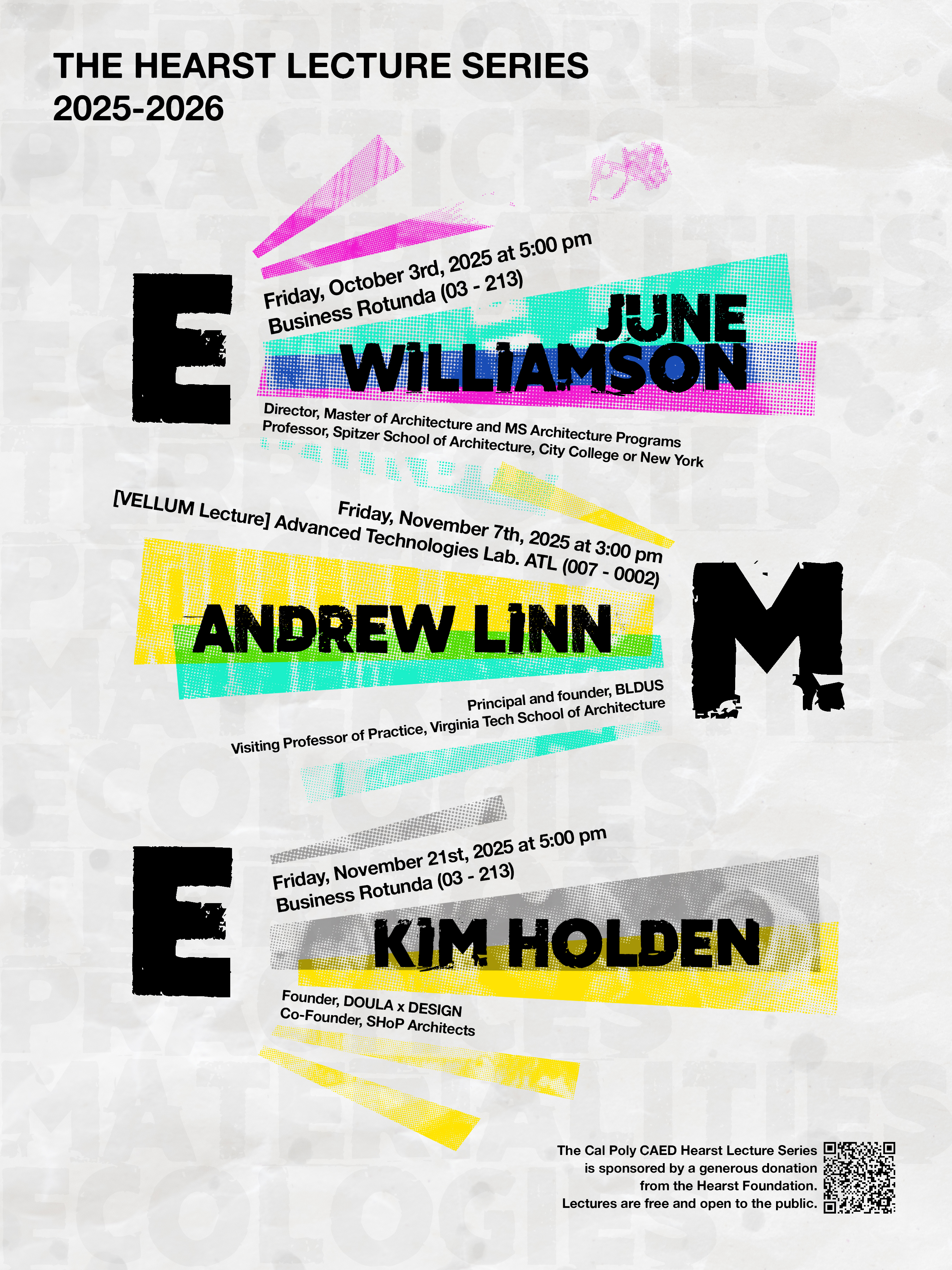Connecting Cal Poly Architecture to Los Angeles
by Kai Parel-Sewell

In a recent exhibition at the Berg Gallery showing off LA Metro’s latest work, Program Director Stephen Philips and a former LA Metro student, Nick Goldschmidt, discuss the work on display.
Cal Poly’s Los Angeles Metro Program in Architecture and Urban Design (LA Metro) has been expanding students’ connections to the world of architecture in the rich, urban culture of Los Angeles for nearly 15 years.
“LA is one of the biggest international hubs of architecture,” Program Director Stephen Philips describes, “and it always has been since the seventies. LA is one of the places on Earth that architects can really accomplish something.”

Students enter the Berg exhibition, with work pinned up inside and out.
As beautiful as San Luis Obispo is, LA offers a unique perspective on the field of architecture. Alex Ayuso, a recent LA Metro student, discusses how, by being in LA “you’re more aware of the social problems” and “exposed to a new kind of architecture that you just don’t really hear about here in SLO.” Being able to experience an urban environment firsthand is a valuable experience for architecture students.
Throughout the two-quarter long program, students get a unique opportunity to work at renowned local LA firms, such as AC Martin, Morphosis, AECOM, and more. Alongside this work experience, students engage in a rich design studio discourse. Meeting three times a week, the studio focuses on theory, technology and urbanism, while allowing students the opportunity to work on their own design investigations.
The LA Metro studio has a unique structure, made possible by its integration into the local community. Instead of one faculty member teaching the course, an array of accomplished faculty and local community members take turns lecturing and working with the students. This rotation of faculty brings a wide range of specialties and perspectives to studio, such as digital modelling skills, history theory, professional practice and structure and façade design, ultimately working towards a more rigorous design process.

Students created 3D-printed models to convey design ideas, such as the ones shown above at the recent exhibition.
Philips elaborates on the value of this unique system, “between all of our knowledge bases, we bring together a more synergistic way of designing a project."
For their internships, students are matched to local offices at which they work two days a week. This real-world experience proves valuable when it comes time to find jobs, introducing them to the LA architecture community and further building their practical skills.
Emily He, another LA Metro student, explains “in all of our internships we got to build relations not only with our employers and supervisors, but also with people from other firms and industries, too.”

Alex Ayuso discusses his recently completed LA Metro project with peers.
LA Metro also connects students to other architecture schools, such as SCI-Arc, UCLA and USC. A week-long trip to Boston and New York over spring break also allows students to connect with their East Coast counterparts at renowned schools such as Harvard, Yale and Cooper Union.
Another LA Metro student, Nick Goldschmidt, explains how the “trip to Boston and New York allowed us to experience a variety of options for what we can pursue upon graduating from Cal Poly. It’s helpful to see various grad schools and offices in-person and talk to Cal Poly grads about their transition from the West Coast to East Coast. Life there moves at a very different pace from what we are used to in California, and it was a valuable learning experience for each student, even if it may not be something they ultimately end up pursuing.”
Beyond the valuable connections made from internships and the East Coast trip, LA Metro also hosts a series of intimate, public lectures followed by dinner, allowing students to really engage in discussion and further connect to the larger architecture community.
“It’s very exciting and fun to get to meet these quite renowned architects. They’re accomplished in challenging ideas,” Philips says. Some of the lecturers were once students at Cal Poly, “now they're practicing architects, making a difference in the community, and we can bring them back and have a conversation with them,” he continued.
This combination of practical experience, networking and a rigorous studio has been a major pull factor for students over the years.
“LA Metro provides us an opportunity to work on a project in an urban setting and at a much larger scale than we are usually used to,” Goldschmidt explains. “This is an exciting challenge that allows us to broaden our skills and experiment while still getting work experience.”
This drive to learn and explore is much of what makes this program succeed. “Cal Poly students are just so incredible that they simply show the firms how valued they are,” Philips says. “It’s the opportunity to get in the door. That’s always the hard thing.
Look out for upcoming lectures on LA Metro’s Instagram: @calpoly_lametro



